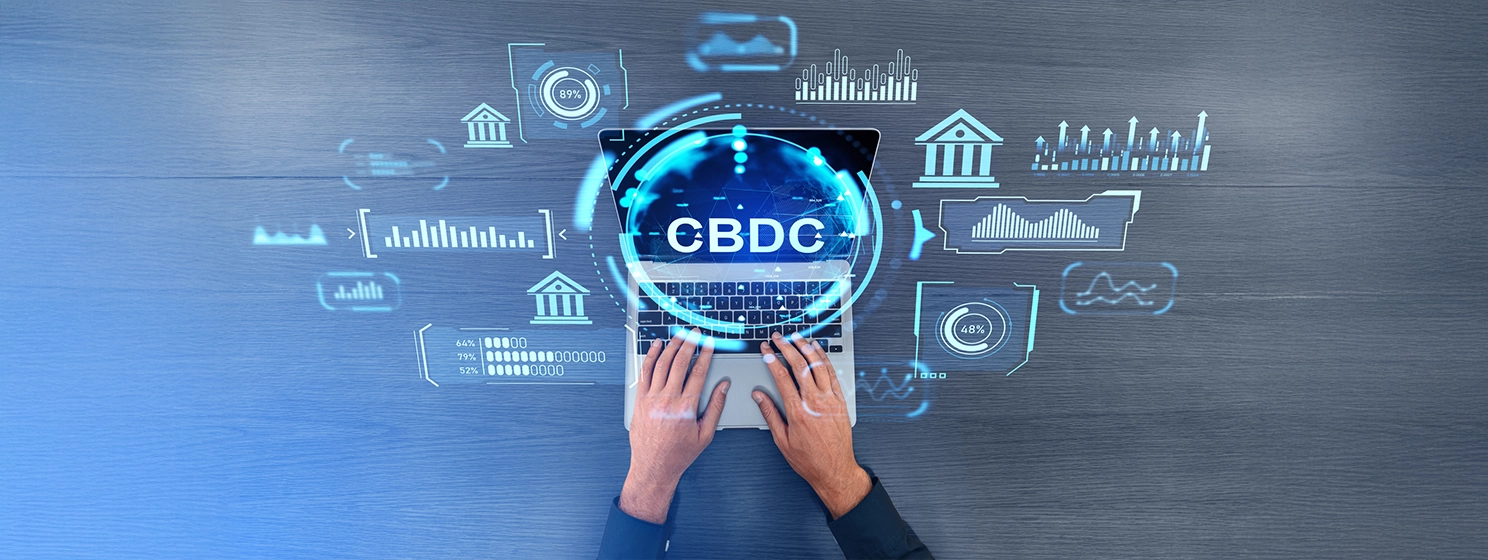India will soon introduce a Digital currency (CBDC) that is expected to simplify transactions and reduce paper use, while enableing faster and traceable transactions compared to traditional bank. This will be based on blockchain technology to ensure openness and legal transactions.
“We come out with a digital currency that will be supported by India’s reserve bank (RBI) Guarantee. It will be like regular currency … something that Stablecoins announced, “Commerce Minister Piyush Goyal mentioned in a round table under his Visit Qatar.
“Our idea is that this will only make it easier to shop, will also reduce paper consumption and will be faster to trade than the banking system. But it will also have traceability through blockchain. So only legal transactions can be done,” added Goyal.
The explanation comes just a few days after Finance Minister Nirmala Sitharaman announced that Stablecoins are quickly resigns global fundingEspecially in the cross -border movement of capital. Countries may soon have to adapt to this new financial system or risk remaining.
Previous, Pradeep Bhandarithe national spokesman for India’s ruling political party, Bharatiya Janata Party (BJP), proposed An Indian-rupie-supported Stablecoin. He explained that India gets over 11 Lakh Crore ($ 132.5 billion) in transfers annually. Nevertheless, many still meet delays and significant transaction costs. A blockchain-based digital currency can help to facilitate this process, enabling close real-time transfers at lower costs and on transparent networks.
Coexist with India’s CBDC
According to Goyal, the digital currency, “something” resembled with Stablecoins, along with India CBDCor e-rupia.
RBI started its first CBDC pilot in the wholesale segment on November 1, 2022 to solve secondary market transactions in state securities. The pilot started with nine banks – State Bank of India (Nasdaq: SBKFF), Bank of Baroda, Union Bank of India, HDFC Bank (Nasdaq: HDB), ICICI Bank (Nasdaq: Ibn), Kotak Mahindra Bank, Yes Bank, IDFC First Bank and HSBC (Nasdaq: HSBC).
The Retail CBDC pilot Started on December 1st 2022 and users could shop through a Digital wallet Offered by the participating banks and stored on mobile phones or devices.
Currently, India has approximately seven million CBDC users and have no rush For a complete roll-out of e-coupia, the RBI’s Deputy Governor informed T. Rabi Sankar.
“Right now we focus on creating sufficient use cases, especially programmable. The area we focus on is that a user who does not need to understand any technology should be able to attach a program to CBDC and then use it,” Sankar reportedly said On the Sidel line for Global Fintech Fest 2025.
“The basic case for CBDC eventually comes in the cross -border space. So we have to get into some cross -border arrangements,” he added.
While RBI believes CBDC is the future of moneyCentral Bank has struggled to popularize the retail notification of its e-rupie against Fast growth of India’s flagship Uniform payment interface (UPI), a global success story and an example of effective Digital public infrastructure (DPI).
Sanks stated that RBI actively examines cases of several uses for CBDC in different progress stages. These features aim to create distinct Applications for the digital currency and thus promote its assumption.
“Usually you can make a program based on which merchant you want to use it for, which geography you want to use, or within the time you want to use. These are the standard criteria based on which we will create programs,” added Sanks.
RBI plans deposit tokenisation with banks
RBI plans to introduce a pilot project on Deposit tokenizationthat will utilize the wholesale version of its CBDC as the basic layer, according to A Reuters report. The central bank cooperates with selected banks to implement this project.
“From a regulatory point of view for the tokenization of an underlying asset, we believe that integrity and enforceability must be determined … Risks in asset coinage are manageable and can be handled through legislative tracks,” says RBI’s head of Suvendu Pati.
Tokenization involves converting assets such as deposits, shares or bonds to digital format registered on a blockchain. This technology can improve transaction speed, reduce costs and improve safety.
The central bank also examines the use of Tokenization in money market instrumentsas commercial paper (CPS). Cps are short -term debt instruments issued by companies to raise money.
In its payment system report in January 2025 RBI noted The short -tokenization has seen widespread assumption, with over 910 million tokens created in December 2024. Tokenization replaces actual card information with a unique code, which improves security by preventing merchants from storing sensitive data. The system was introduced for units in 2019 and short-on filing transactions in 2021 and has supported more than 3.2 billion transactions.
India discourages the decentralized “crypto” trading
India is clearly moving toward a Digital currency futureBut not in a way “crypto” enthusiasts usually imagine. Instead of promoting decentralized, privately issued digital assets such as Bitcoin or Ethereum, the country focuses on government -regulated alternatives to ensure monitoring, stability and superb control.
While you are in Qatar, Goyal Repeated That India does not encourage digital asset trading because it lacks superb support but is simply interested in taxing it.
“When it comes to cryptocurrency, there is no ban as such, but we tax it very strongly. We do not encourage it because we do not want anyone to get stuck at any time with a currency or with a cryptocurrency, which has no support and no one in the back,” “Goyal pointed out.
“Suppose this morning there is no buyer. There is no one to guarantee … so there is one thing you can do at your own risk and cost. The government does not encourage or deter. We do not engage in it. We just tax it,” he added.
While the world’s most populous land leads in adoption of digital accessIt puts one 30% flat tax on all profits earned from digital asset trade without a provision to compensate for losses and a 1% tax deducted at the source (TDS) on all transactions above 10,000 INR ($ 112), as well as one 18% goods and services tax (GST) on transactions. Sitharaman has already clarified That “cryptocorate” cannot be a legal currency in India.
India is too Not anxious When introducing specific legislation to regulate digital assets, you can instead choose a limited supervisory method due to concerns to integrate digital assets into the country’s mainstream financial infrastructure constitute systemic threats. With high taxation and no clear legislation, India digital asset exchanges are is likely to look at a consolidation in 2025With smaller exchanges either to turn off the business or merged with larger ones.
See: What happens to blockchain technology in India?
https://www.youtube.com/watch?v=5lap7qe-1UU Title = “Youtube video player” Ramborder = “0” Allow = “Accelerometer; Autoplay; Clipboard writing; encrypted media; Gyroscope; Image-in-Bild; Web Dividend” Reference Policy = “Strict-Origin-When-Cross-Origin” Allowing Lorscreen = “>”





